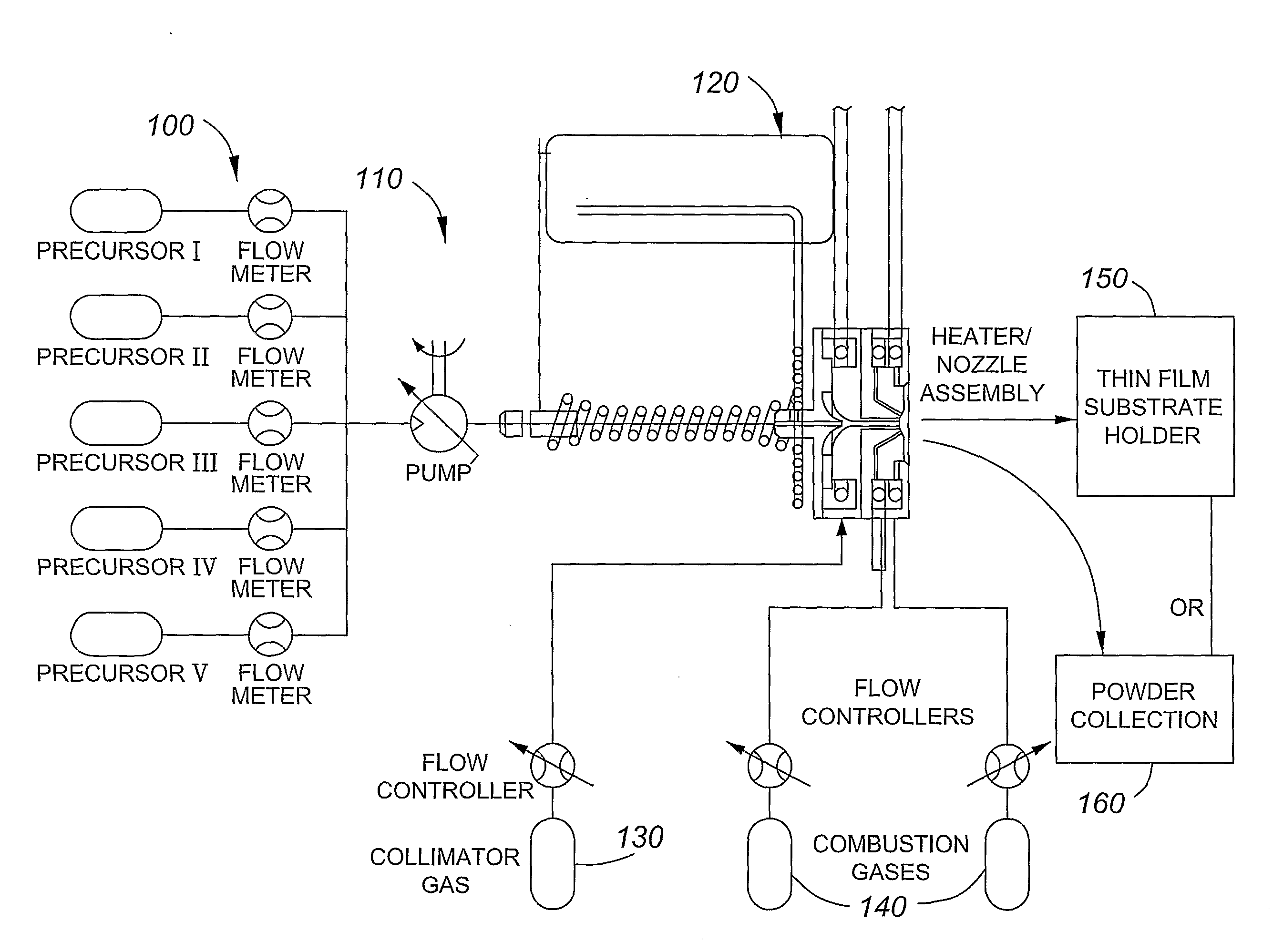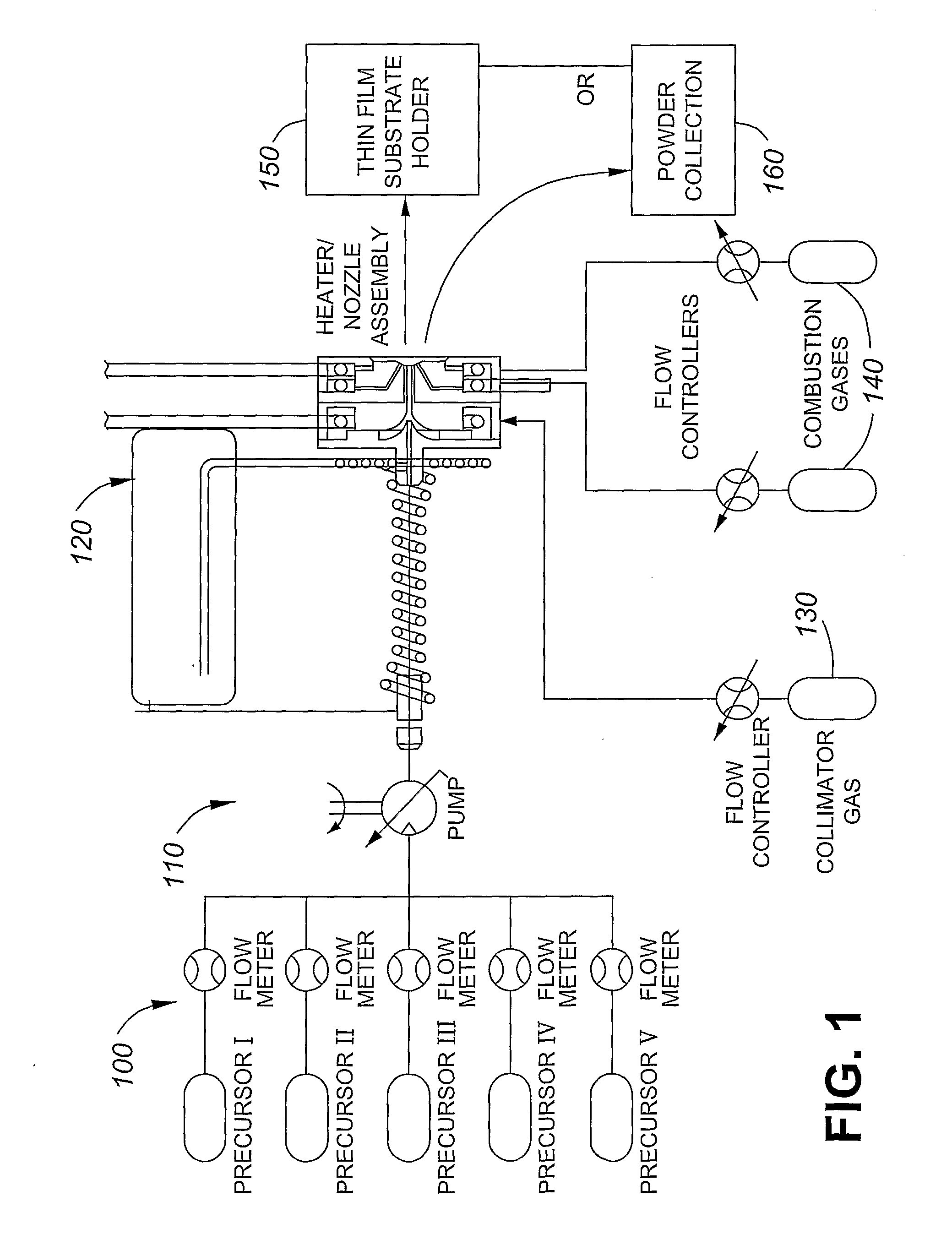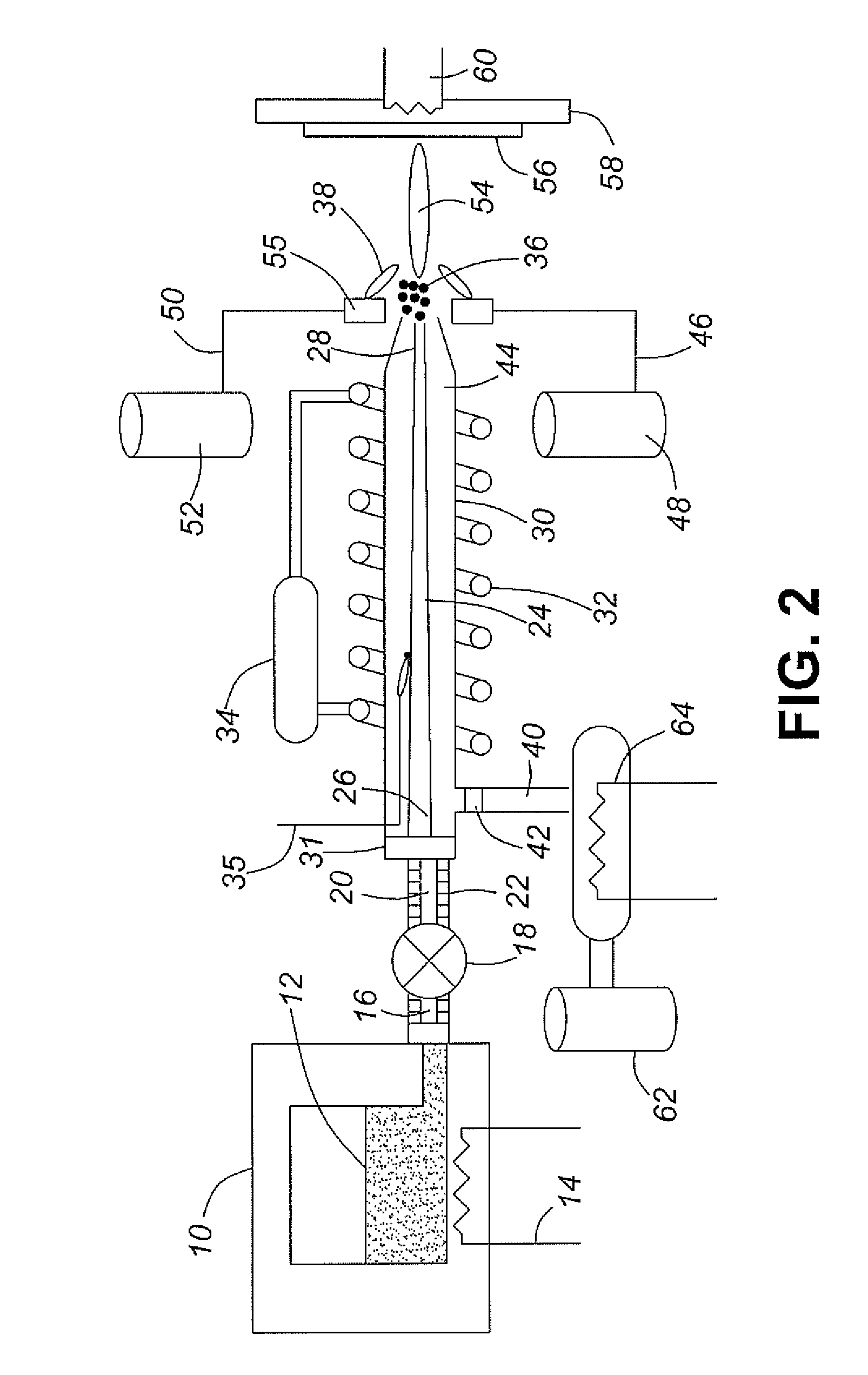Reactive Spray Formation of Coatings and Powders
a technology of reactive spray and coating, applied in the direction of coating, plasma technique, metal material coating process, etc., can solve the problem of poor adhesion of powdery particles and agglomeration of particles
- Summary
- Abstract
- Description
- Claims
- Application Information
AI Technical Summary
Benefits of technology
Problems solved by technology
Method used
Image
Examples
example 1
[0100]In Example 1, deposition of SDC was carried out on the apparatus as illustrated in FIG. 2. Two feedstock solutions were made. The first one was prepared with 0.46 g of samarium acetylacetonate (Sm-acac) and 4.67 g of cerium-2 ethylhexanoate (Ce-2eh) dissolved into 47.5 g of toluene in a container 10. Next, 215.3 grams of acetone were added to the container 10 and the container was capped off; then 112.6 g of di-methyl ether was added to the container and thoroughly shaken. The container was heated to 350 C. so that the solution formed a supercritical solution. The second solution was made exactly the same as the first but without Sm-acac and Ce-2eh and was designated as blank. The blank was stored in a separate container 10. The pump was set to a flow rate of 4 ml / min and the blank solution was passed into the nozzle. The frequency of the induction heater 32 was set to 271 kHz and the nozzle temperature 35 was set to 350 C. The oxidant 50 and fuel gas 46 for the burner assembl...
example 2
[0101]In Example 2, a bilayer of Pt and Pt / carbon for use in PEM fuel cells was deposited by RSDT. First, 0.75 g of Pt-acetylacetonate was dissolved in 197.6 g of toluene in a container 10. Next, 39.5 g of propane was added and the container was thoroughly mixed. The solution 12 was heated to 350 C. The substrate 56 (FIG. 4) in this example was a Nafion® membrane. In this example, a set of air knives 72 was used to cool the flame 54 so that the substrate 56 was maintained below 140 C. The reaction plume consisted initially only of streams 54 and 72 for the initial deposition of the Pt sublayer 90 onto the Nafion® membrane 56. The flow rate of the Pt feedstock was set to 4 ml / min. The frequency of the induction heater was set to 271 kHz and the nozzle temperature 35 was set to 200 C. The oxidant 46 and fuel gas 50 for the burner assembly were oxygen and methane respectively. The shaping gas 40 was set to a flow rate of 1.95 L / min and heated to a temperature of 350 C. The methane 50 a...
PUM
| Property | Measurement | Unit |
|---|---|---|
| diameter | aaaaa | aaaaa |
| inner diameter | aaaaa | aaaaa |
| inner diameter | aaaaa | aaaaa |
Abstract
Description
Claims
Application Information
 Login to View More
Login to View More - R&D
- Intellectual Property
- Life Sciences
- Materials
- Tech Scout
- Unparalleled Data Quality
- Higher Quality Content
- 60% Fewer Hallucinations
Browse by: Latest US Patents, China's latest patents, Technical Efficacy Thesaurus, Application Domain, Technology Topic, Popular Technical Reports.
© 2025 PatSnap. All rights reserved.Legal|Privacy policy|Modern Slavery Act Transparency Statement|Sitemap|About US| Contact US: help@patsnap.com



